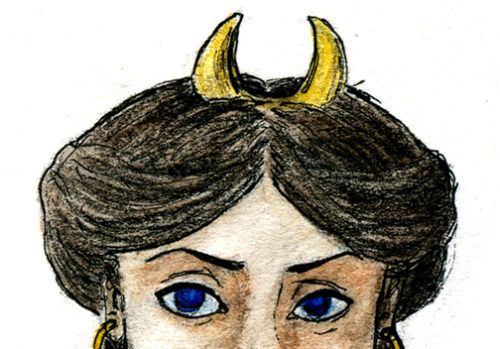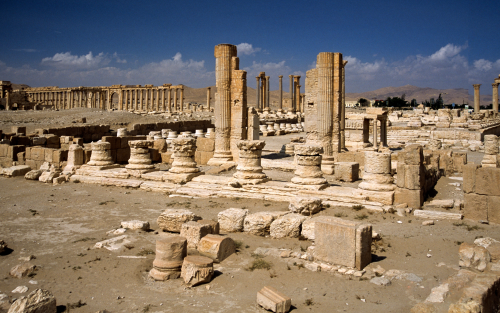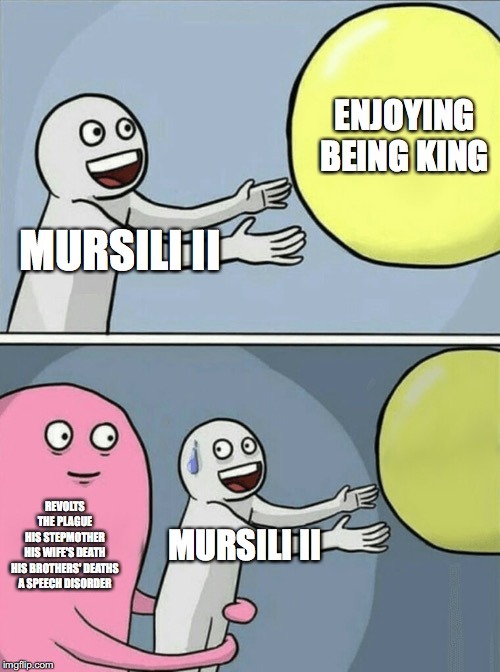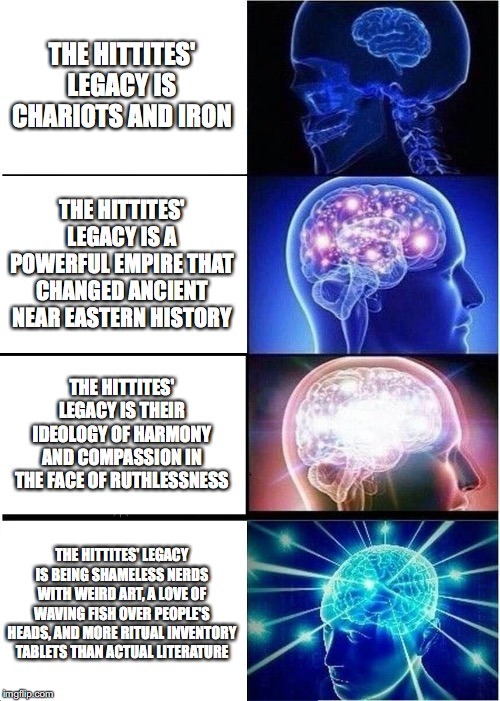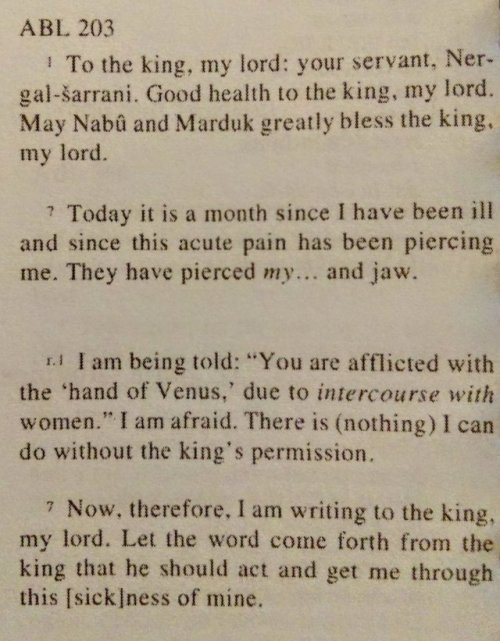#mesopotamian
Year One done. Epic of Gilgamesh design exploration #gilgamesh #epicofgilgamesh #shamhat #enkidu #mesopotamian #illustration #drawing #art #lcad #comicart #comicartist #gayhistory #gaymyths #gaylegend #gaymythology #mythology #characterdesign
Post link
A cover for my pretend Epic of Gilgamesh game featuring Ereshkigal, Goddess of the Underworld. I plan to do variant covers with Gilgamesh, Enkidu and Ishtar as well as this one. I really hope you like it, and feedback is, as ever, very appreciated!
Post link
I’m working on this digital painting of Gilgamesh. Any comments on the character design are very, very appreciated!
Post link
I haven’t finalised my design for Ishtar for the current project yet, but here’s a preview of one version (the blue eyes are based on the lapis lazuli inserts some statues have)
Post link
Inanna was the goddess of war, sex, and the dispensation of justice in the ancient kingdom of Sumer in Mesopotamian mythology. One particular Sumerian hymn details how she became a goddess of sexual love, particularly for women. In the story, Inanna asked her twin brother Utu(god of the sun) to accompany her to a magical place called the Kur, where sacred plants grew because she was forbidden from traveling alone. When they arrived, she wanted to eat a sacred fruit of knowledge so that she could learn the secrets of intimacy, telling Utu “What concerns women namely, men I do not know. What concerns women lovemaking I do not know.” Utu relented and allowed her to eat the fruit, and so Inanna then became aware of the power of her own sexuality. Over time though she merged with the figure of Ishtar in the ancient world, and they are often portrayed as one and the same.
(Zuhair Murad Spring 2020 Haute Couture Collection)
Post link


Temple of Nabu
Palmyra (Tadmor), Syria
2nd century CE
The temple was a Corinthian Hexastyle Peripteral temple dedicated to Mesopotamian god of wisdom and writing, and was Eastern in its plan; the outer enclosure’s propylaea led to a 20-by-9-metre podium through a portico of which the bases of the columns survives. The peristyle cella opened onto an outdoor altar.
The temple is characterized by its eastern style and architectural and cultural features which still exist at the site, according to Assaf.
He clarified that there are three entrances towards the long street and a main entrance in the southern side, surrounded by corridors and columns with Corinthian crowns with decorations on either side and three rooms directly connected to the inner hallway, which leads to a courtyard with a temple in center.


Post link
It’s been a whole year since I started this project, and seeing it grow to the size it is today is amazing - I never imagined that it would ever get this popular! So to celebrate, I decided to take a look at some roast duck - based on some Sumerian cuneiform fragments.
In any case, let’s now take a look at The World That Was! Follow along with my YouTube video, above!
Ingredients
2kg duck
ground cumin
ground coriander
salt
pepper
1 leek, chopped
1 onion, minced
2 cloves garlic
750ml water (or stock)
butter
Method
1 - Prepare the Duck
To begin making this roast duck, we need to prepare our duck. I’m using a whole bird here, but you could just as easily cook this in pieces - it’s up to you! Start by scoring the breast with a knife a few times, to increase the seasoning surface area. The original fragment claims to be dealing with an unnamed bird, so I opted for duck - as wildfowl would have been a staple for Mesopotamia. But chicken or squab would have also been eaten around this time.
In any case, season your bird of choice using some salt, some freshly ground black pepper, some ground cumin, and some ground coriander. Rub this into the meat with your hands if you can handle it. Though I’m going to be dry-roasting this, it’s likely that the meat would have been boiled in a stew or soup broth for a while before being roasted in an oven.
2 - Roast the Duck
Place your seasoned bird breast-side down on a roasting rack. And then place this into the centre of an oven preheated to 200C / 400F for about two hours (based on a 2kg bird of course), flipping this over about 30 minutes before serving so the breast meat roasts perfectly. When you’ve flipped the bird, go and prepare your soup.
3 - Prepare the Soup
To pair with this, I made a quick and easy leek and herb soup. Start by chopping a leek into segments as thick as your thumb or so. Also chop an onion in half, and mince each half.
Toss some butter into a pot and put it onto a high heat. When the butter melts, toss in your leeks and onions. Return the pot to the heat, and let everything sauté away for a few minutes until the onion turns soft and translucent. At this point, toss in a few shakes of cumin and coriander, along with 750ml of water (or a soup stock of your choice). Into this, add some thyme and mint sprigs.
Let everything cook away for about 20 minutes, or until the leeks are practically falling apart.
Fish out your herb sprigs, and serve up alongside your duck!
The finished roast is super succulent, and very flavourful. The seasoning on the duck gave it a sharp zesty flavour, which paired very nicely with the herby, minty flavour of the soup. The meat itself has a lovely crisp skin, and tender flesh. This is a reconstruction of a fragmentary recipe from the Yale Cuneiform collection - others have postulated that it is separate to the pigeon stew recipe fragment, while others have claimed it to be a continuation of it. I chose to do a simple roast here, as ovens for cooking and baking would have been able to do this with little modification in antiquity (such as the use of a spit or shaft of metal or wood to cook the meat over a naked flame.
This week, I’m recreating some Akkadian bread, as seen in some cuneiform inscriptions, as well as visual representations in carved panels in Akkadian palaces.
The original bread has a striking similarity to modern Iraqi samoon - from it’s shape to it’s description in Akkadian!
In any case, let’s now take a look at the world that was! Follow along with my YouTube video, above!
Ingredients
1 cup wholemeal flour
2 cups plain flour
salt
water
active dry yeast (or 1/3 cup sourdough starter)
milk
sesame seeds
Method
1 - Preparing the Dough and letting it Rest
To begin with, we need to make a starter. The easiest way to do this today is to use some dry active yeast, opening a sachet, and placing it in a bowl with a bit of warm water. But if you have some sourdough starter, you can use 1/3rd of a cup of that instead! But keep in mind that the sourdough starter will affect how hydrated your dough is later on.
Pour in 1 cup of wholemeal flour, along with two cups of plain white flour into the yeasty mix, and mix everything together until the dough starts to pull away from the sides of the bowl cleanly. If it’s too dry and crumbly, add some water - little by little - until it comes together into a smooth ball.
When it’s ready, place a damp cloth or a bit of clingfilm over the top of your bowl, and let the whole thing prove in a warm area for a few hours - or until it’s doubled in size.
2 - Forming your Bread
When your dough has expanded hugely, tip this out onto a lightly floured worksurface, and get to kneading. Fold and twist this around for about 10 minutes, just to help develop a better texture of the loaf down the line. When you’re finished kneading it, roll the whole thing into a long snake of dough. Cut this in half, and these halves in half again, so you wind up with four roughly evenly-sized balls of dough.
Carvings of Akkadian banquets show off lemon-shaped loaves of bread, and modern samoon are formed in a similar way. So roll a ball of dough in your hand, leaving two nubs at either end of it. Flatten the centre of the loaf down, by stretching and pulling at the dough until it smooths down.
3 - Baking
When they’re formed, place them onto some baking paper, and cover them with a damp towel for about 20 minutes. After this, brush them with a bit of milk, before sprinkling some sesame seeds over the top of them if you want. Bake these in an oven preheated to 230C / 450F for 15-20 minutes, or until they turn golden brown.
Serve up warm, and dig in!
The bread is delicious and fluffy, with a nice crisp crust. The sesame seeds - if added to the top - become toasted and flavourful when baked.
The original name for this bread would have been “ninda ensu” - which literally translates to “the bread of the king/ruler”. “ninda”being a catch-all word for a variety of breads and cakes in the Akkadian language, so while it’s likely that “ninda ensu” referred to a savoury bread, it’s also likely that this may have been sweetened too!

Ereshkigal Aesthetic
In Mesopotamian mythology, Ereshkigal was the goddess of Kur, the land of the dead or underworld in Sumerian mythology. In later myths, she was said to rule Irkalla alongside her husband Nergal. Sometimes her name is given as Irkalla, similar to the way the name Hades was used in Greek mythology for both the underworld and its ruler, and sometimes it is given as Ninkigal, lit. “Lady of the Great Earth”.
The Babylonian origin goddess Tiamat as depicted by Carolyn Scrace in Gerald Legg’s X-Ray Picture Book of Incredible Creatures. Her scale and configuration here puts me in mind of a GMO or even Mythos biosphere-seeding machine, a kind of monstrous Last Universal Common Ancestor.
Post link
Cuneiform tablet counting beer for the workers. Circa 3100-3000 B.C, from Uruk in what is now southern Iraq. Now in the British Museum.
The beer on the tablet is represented by a jar with a pointed base. Food is symbolized by a head eating from a bowl (bottom left). The semicircular imprints (possibly made by the edge of a finger) stand for the measurements.
~Hasmonean
Post link
Phoenician depiction of a sphinx made of ivory. Depictions of them were not solely restricted to Egypt. From Fort Shalmaneser in northern Iraq, circa 900-700 B.C. Now in the British Museum.
~Hasmonean
Post link


An individual named Assur-sumu-iddina responding to a certain Summu-Assur. It appears Assur-sumu-iddina did not respond to Summu-Assur’s initial letter. The reason–or possibly excuse–is that Sumu-usur was supposed to give Assur-sumu-iddina the letter. Instead, a nameless man, possibly the courier, didn’t give the letter either and ran away.
Either way, another example of people in ancient world not replying to each other. Source: Letters from Assyrian and Babylonian Scholars by Simo Parpola.
~Hasmonean

A cuneiform letter from the Old Babylonian period (circa 1900-1600 B.C.) shows the first example of ghosting. Written by a certain Sîn-magir to an individual named Sîn-eribam, the letter records the follow line:
Good behavior it is, that I write to you again and again, and you pay no attention to me.
Apparently, previous letters were sent but Sîn-eribam had no intention of every responding.
~Hasmonean
Hi, my name is sisterofiris and I’m here to provide you with extremely niche Hittite memes
Bless
~Hasmonean
Post link
I HAVE AN STD, SEND HELP!!!
A letter written from the Neo-Assyrian (circa 911-612 B.C.) priest Nergal-šarrani to his king asking for medical aid for an STD he contracted by having lot’s of sex with women. Original language is Akkadian. From Nineveh in northern Iraq and now in the British Museum. Archival view.
What is interesting is the STD is being called “hand of Venus”, or in the original text “qatu Dilibat(ordil-bat).” In Mesopotamian medical texts the hand could signify a disease label or the ultimate disease cause agent. Transliterated cuneiform and translation of text (link).
Nonetheless, an odd thing to write to your king.
~Hasmonean
Post link








